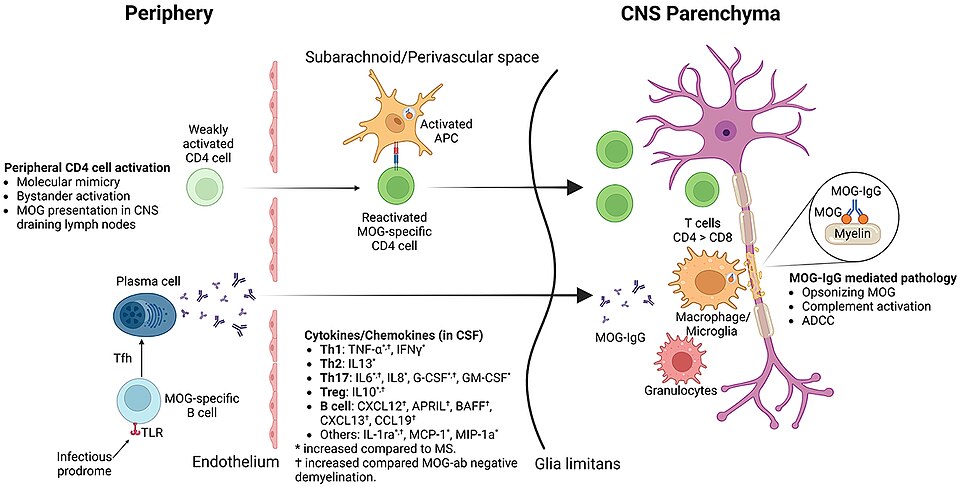Meningitis: An Emerging Early Indicator of MOGAD in Patients

In a recent research letter published in JAMA Neurology, a team of international researchers has highlighted the potential of meningitis as an underrecognized early manifestation of myelin oligodendrocyte glycoprotein antibody–associated disease (MOGAD). The study, which analyzed data from 810 patients diagnosed with MOGAD, revealed that 34 individuals (approximately 4%) exhibited signs of meningitis, characterized by symptoms including headache, fever, and encephalopathy.
According to Dr. Eoin P. Flanagan, MB, BCh, a professor of neurology and chief of the Division of Multiple Sclerosis and Autoimmune Neurology at Mayo Clinic, the recognition of meningitis as a possible attack phenotype of MOGAD is crucial. "A meningitis attack phenotype occurred in 4% of the MOGAD cohort," Dr. Flanagan stated, emphasizing that many of these cases evolved into classic demyelinating events or presented with significant encephalopathy. This suggests that meningitis may represent an early stage of a more complex neurological condition, where typical demyelinating lesions are not immediately visible on imaging studies.
The study's findings are particularly significant as they indicate that early identification and treatment of meningitis in MOGAD patients could prevent further neurological deterioration. The patients with meningitis reported symptoms that included headache (94%), fever (62%), and nuchal rigidity (24%). In contrast, 50% of the cohort subsequently developed intra-attack encephalopathy, which could complicate diagnosis and treatment pathways.
Research methodologies employed in this study involved the collection of cerebrospinal fluid (CSF) and serum samples from patients, with analysis revealing elevated CSF opening pressure in 11 out of 18 cases, alongside MRI scans showing leptomeningeal changes in several patients. The retrospective nature of the study has led to calls for updated diagnostic criteria for MOGAD to include meningitis and meningoencephalitis as recognized attack types. Dr. Flanagan and his colleagues noted, "Future updates of MOGAD diagnostic criteria could add meningitis/meningoencephalitis as an attack type, allowing earlier testing, diagnosis, and treatment before the onset of parenchymal disease."
The study, however, acknowledges some limitations, including the reliance on retrospective data and the potential for misdiagnoses, as many patients initially presented with suspected infectious meningitis. A significant proportion (68%) received antimicrobial treatment prior to diagnosis, reflecting the challenge in distinguishing MOGAD-related meningitis from infectious causes.
Experts in the field have echoed the necessity for further research. Dr. Marco Meglio, a neurologist and researcher, commented, "The implications of these findings underscore the need for vigilance in diagnosing MOGAD, especially in patients presenting with atypical symptoms of meningitis. Early intervention is key to improving patient outcomes."
In light of these findings, the study advocates for healthcare professionals to remain alert to the possibility of MOGAD in patients with atypical meningitis symptoms. As Dr. Flanagan concluded, "This emerging understanding of the disease highlights the importance of a nuanced approach to diagnosis and treatment, ensuring that patients receive appropriate and timely care."
As researchers continue to unravel the complexities of MOGAD, the integration of meningitis into diagnostic criteria could pave the way for better management strategies and improved patient outcomes in the future.
Advertisement
Tags
Advertisement





